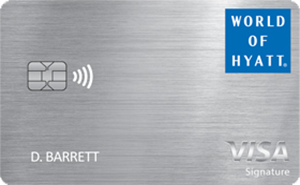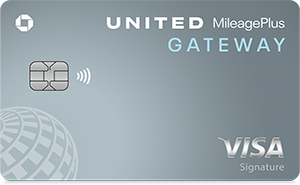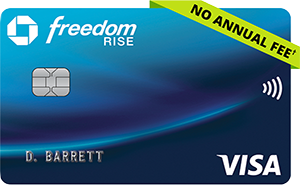Chase Sapphire Travel Insurance: Everything You Need to Know

When you travel, nothing is certain, and anything from illness to bad weather can throw a wrench into your plans. Credit card travel insurance can help cover some of the significant costs that you might face when the unexpected happens, such as a rental car fender bender or an overnight flight delay.

400+ Credit Cards
Analyzed independently across 50+ data points in 30+ product categories

Reviewed
By a team of credit card experts with an average of 9+ years of experience

Trusted by
More than one million monthly readers seeking unbiased credit card guidance
CardCritics™ editorial team is dedicated to providing unbiased credit card reviews, advice and comprehensive comparisons. Our team of credit card experts uses rigorous data-driven methodologies to evaluate every card feature, fee structure and rewards program. In most instances, our experts are longtime members or holders of the very programs and cards they review, so they have firsthand experience maximizing them. We maintain complete editorial independence — our ratings and recommendations are never influenced by advertiser relationships or affiliate partnerships. You can learn more about our editorial standards, transparent review process and how we make money to understand how we help you make informed financial decisions.
Most of the top travel credit cards offer some coverage when you use them to pay for your trip costs. The Chase Sapphire Preferred® Card and Chase Sapphire Reserve® are among the best of these, offering comprehensive travel insurance and other protections. Let’s take a close look at Chase Sapphire travel insurance and what’s included to help you decide if you need additional coverage for your travels.
Does Chase Sapphire Offer Travel Insurance?
Both the Chase Sapphire Preferred Card and Sapphire Reserve include travel insurance. Each offers several types of coverage to protect you from some of the most common issues that you might encounter while traveling, including:
- Trip cancellation and trip interruption coverage
- Trip delay insurance
- Baggage delay insurance
- Lost luggage reimbursement
- Rental car insurance
- Travel and emergency assistance services
- Travel accident insurance
Because it’s a premium credit card, the Sapphire Reserve card comes with additional protections you don’t find on most other travel cards, including:
- Emergency evacuation and transportation coverage
- Roadside assistance
- Emergency medical and dental benefit
Regardless of which Sapphire card you have, you’ll have a solid foundation of travel insurance to protect you. Keep in mind the Sapphire Reserve offers better coverage in certain areas. Depending on your comfort with risk and the type of trip you’re planning, you might find it worthwhile to apply for the Sapphire Reserve vs. the Sapphire Preferred Card to get its extra travel insurance.
Types of Travel Insurance Offered by Chase Sapphire Cards
Chase Sapphire Preferred Card and Sapphire Reserve cardholders receive a variety of protections. If you plan to use Sapphire travel insurance, carefully review your card’s guide to benefits to find out about specific limitations and exclusions. In almost all cases, you’ll need to use your card to pay for your travel to receive coverage.
Trip Cancellation and Interruption Insurance
Trip interruption or cancellation insurance can reimburse eligible expenses you might incur if your trip ends unexpectedly or is cancelled before it begins. For example, if severe weather or a serious injury forces you to cancel or cut your trip short, this insurance can cover prepaid, nonrefundable expenses like plane tickets, hotel stays and cruise line reservations. You will generally only be reimbursed for the portion of your trip that didn’t happen or was cancelled.
With either Sapphire card, you could be reimbursed up to $10,000 per covered traveler and $20,000 per trip (for all covered travelers), with a maximum of $40,000 in reimbursement per 12-month period.
Trip Delay Insurance
Trip delay insurance helps pay for reasonable expenses if your common carrier (such as airline) delays your travel. This could include things like meals or accommodations during an overnight delay. With the Sapphire Preferred Card, you can receive up to $500 in reimbursement per covered traveler, per trip, when your common carrier delay is for more than 12 hours or requires an overnight stay. The Sapphire Reserve offers similar coverage, but it only requires a delay of six or more hours (or an overnight stay).
Baggage Delay and Lost Luggage Reimbursement
If your baggage is delayed by over six hours, you can be reimbursed for emergency purchases of essential items, such as clothing and toiletries, up to $100 a day for five days. This coverage is the same on both Sapphire cards.
Should your luggage get lost, stolen or damaged, you could receive reimbursement of up to $3,000 per covered traveler per trip to repair/replace your bags and its contents. Some high-value items have lower limits or aren’t covered at all, and New York residents have different coverage limits, so be sure to read the fine print specific to your situation.
Rental Car Insurance
If you decline the rental car company’s collision coverage (collision damage waiver or loss damage waiver) and charge the entire cost of your rental vehicle to your Chase Sapphire card, you will receive primary car rental insurance. This type of coverage doesn’t require you to file a claim with your personal policy (if you have one) first.
With the Sapphire Reserve card, you can be covered for up to $75,000 for theft and collision damage on most car rentals in the U.S. and abroad. The Sapphire Preferred Card covers up to $60,000 in rental car damage but certain exotic car brands are excluded.
Travel Accident Insurance
When you use your Sapphire card to pay for common carrier transportation (such as by plane, train, ferry or cruise ship), you can receive accidental death or dismemberment coverage. Sapphire Preferred Card members receive up to $500,000 in coverage, while Sapphire Reserve cardholders receive up to $1,000,000 in coverage.
Travel and Emergency Assistance Services
Chase Sapphire cardholders can call a travel and emergency assistance hotline if they need help while away from home. The service can provide things like medical and legal referrals or help locating lost luggage. While the call to the hotline is free, you will need to pay for any services that you use.
Chase Sapphire Preferred Card vs. Sapphire Reserve: Key Differences in Travel Insurance
The Chase Sapphire Preferred Card’s benefits should be adequate for the average traveler facing the most common travel issues. Travel insurance benefits on the Sapphire Reserve card are the same in most instances, but in a few cases it offers higher coverage limits.
More Coverage
- Sapphire Preferred Card holders receive up to $500,000 in travel accident insurance, while Sapphire Reserve cardholders receive up to $1,000,000 in coverage.
- Sapphire Reserve rental car coverage has a higher limit, and certain exotic vehicles are included.
- Sapphire Reserve cardholders can get a reimbursement if their trip is delayed by six hours or overnight, while Sapphire Preferred Card holders’ trips need to be delayed by at least 12 hours (or overnight) before they qualify for reimbursement.
The Sapphire Reserve card also includes some protections that the Sapphire Preferred Card doesn’t offer:
- Emergency evacuation and transportation covers medical services and transportation costs for up to $100,000 (must be authorized and arranged by Chase’s emergency evcuation and transportation service provider)
- Roadside assistance covers up to $50 in services per incident, four times a year. You can use this coverage when you need a tow, tire change, locksmith, jump start or gas.
- An emergency medical and dental benefit offers up to $2,500 in reimbursement for eligible medical services needed when you’re 100 miles or more from home.
Lounge Access
Additionally, Sapphire Reserve cardholders and up to two guests receive access to more than 1,500 Priority Pass and Chase Sapphire airport lounges worldwide. Having a credit card with airport lounge access can make your travel experience more enjoyable, with most lounges providing complimentary food, drinks, Wi-Fi and other amenities.
Annual Fees
While Sapphire Reserve offers more travel insurance benefits, it has a higher annual fee. The Sapphire Reserve’s annual fee is $795, while the Sapphire Preferred Card’s annual fee is a more manageable $95.
Be sure to consider how much you travel and how likely you are to use the insurance and benefits when deciding which card is right for you.
Step-by-Step Guide to Filing a Claim
Here’s how to get your expenses reimbursed:
1. Pay for Your Trip With Your Card
To qualify for Chase Sapphire travel insurance, you’ll generally need to charge your travel expense to your card. For example, Chase car rental insurance only applies if you use your card to book the full cost of the rental car and decline the rental agency’s collision damage waiver/loss damage waiver.
The exact steps to file a claim vary depending on the type of claim you’re filing. Consult your Chase Sapphire Benefits Guide for step-by-step instructions specific to different claim types.
2. Contact the Claims Center
Generally speaking, to file a claim, you’ll need to contact the Chase claims center online at chasecardbenefits.com or by phone at 800-350-1362 within the designated period on your policy.
You’ll typically need to submit a completed claim form and may be asked to provide additional documentation or information for your claim, such as receipts or notice of your flight cancellation.
3. Keep Track of Your Documents
For a smooth claims process, keep yourself as organized as possible. Collect and submit all of the documentation requested by the deadline you’re given, and be prepared with details and dates of your trip. It’s a good idea to keep a record of your correspondence, including times and dates of phone calls and the name and title of anyone you spoke with during your trip or at Chase.
Who Should Consider Chase Sapphire Travel Insurance?
Chase Sapphire travel insurance can be a solid choice for travelers who frequently book trips and rent cars. While these cards have annual fees, the travel insurance offers significant value as long as you travel often enough to take advantage of it. And because neither Sapphire card charges foreign transaction fees, you can use them outside of the U.S. without worrying about additional charges, making them ideal for individuals who travel internationally.
If you want more comprehensive coverage, you might consider pairing your Chase Sapphire travel insurance with third-party travel insurance for full protection. For example, you might decide to purchase cancel for any reason (CFAR) coverage for extra peace of mind.
Limitations of Chase Sapphire Travel Insurance
Before you depend on your Chase Sapphire travel insurance, carefully read your policy. Look for exclusions, like preexisting conditions or high-value items, so you understand just what’s covered and what isn’t.
Familiarize yourself with the coverage caps and restrictions, and make sure that you’re comfortable with the amount of coverage you have. If you aren’t, consider buying a policy from a third-party provider.
Additional Perks for Cardholders
The Sapphire Reserve card offers several other travel perks, including rewards on travel and dining purchases. For example, you can earn 8x points on Chase Travel℠ purchases made with your Sapphire Reserve card, and 4x points on airfare and hotels booked directly.
The bonus points apply after you’ve spent your first $300 on travel purchases each year (those purchases covered by the card’s up to $300 annual travel credit), so this feature is most valuable if you travel often every year.
You can use your Sapphire Preferred Card or Sapphire Reserve card to earn and redeem rewards on your purchases. With the Chase Ultimate Rewards® program, you’ll earn points on everyday and travel purchases. Then, you can redeem points for travel, cash back or even gift cards.
You can also transfer your points to Chase’s travel partners and use them to purchase travel. Chase’s partners include popular airline and hotel loyalty programs such as United MileagePlus, Southwest Rapid Rewards and World of Hyatt, and using points can help keep your travel costs down.
The Bottom Line
Chase Sapphire cards include numerous travel protections, and this insurance can give you peace of mind. However, the coverage has some limits and exclusions. Before you plan a trip, carefully review the coverage that’s included with your Chase Sapphire card. You might want to purchase additional travel insurance for more complete protection.
To decide if a Chase Sapphire card is the best fit, think about your spending habits and your travel habits. Both of these cards have annual fees, and their rewards programs mean they’re probably the best fit if you travel often each year.
The information related to the Chase Sapphire Reserve® was collected by CardCritics™ and has not been reviewed or provided by the issuer of this product/card. Product details may vary. Please see issuer website for current information. CardCritics™ does not receive a commission for this product.
Frequently Asked Questions
Rather than having to buy travel insurance for an upcoming trip, you may be able to use the many types of coverage that are included with your Chase Sapphire card. These answers to some frequently asked questions will help you understand the coverage available and decide if Chase Sapphire travel insurance is right for you.
Does Chase Sapphire have travel insurance?
Chase Sapphire credit cards include several types of travel insurance. Both the Sapphire Preferred Card and Sapphire Reserve cards provide protection, though the coverage limits and types of coverage available differ.
What does Chase Sapphire Preferred Card travel insurance cover?
Sapphire Preferred Card travel insurance includes travel and emergency assistance services, trip delay, trip cancellation and interruption, baggage delay, lost luggage, auto rental collision damage, and travel accident insurance.
How do I file a travel insurance claim with Chase Sapphire?
To file a claim, you will need to contact Chase’s claims department and complete a claims form. Your insurance policy documentation will include detailed instructions on how to file different types of claims.
What’s the difference between Sapphire Preferred Card and Sapphire Reserve travel insurance?
The Sapphire Preferred Card’s travel insurance is a bit more limited than the Sapphire Reserve’s. Sapphire Reserve’s coverage has some limits which are higher than the Sapphire Preferred Card limits.
It also includes emergency evacuation and transportation, roadside assistance, and emergency dental and medical coverage, which aren’t included with Sapphire Preferred Card.
Are there exclusions in Chase Sapphire travel insurance coverage?
Like any travel insurance policy, Chase Sapphire travel insurance has some exclusions. For example, the rental car coverage excludes certain types of vehicles. Be sure to thoroughly read your guide to benefits so you understand what’s covered.












